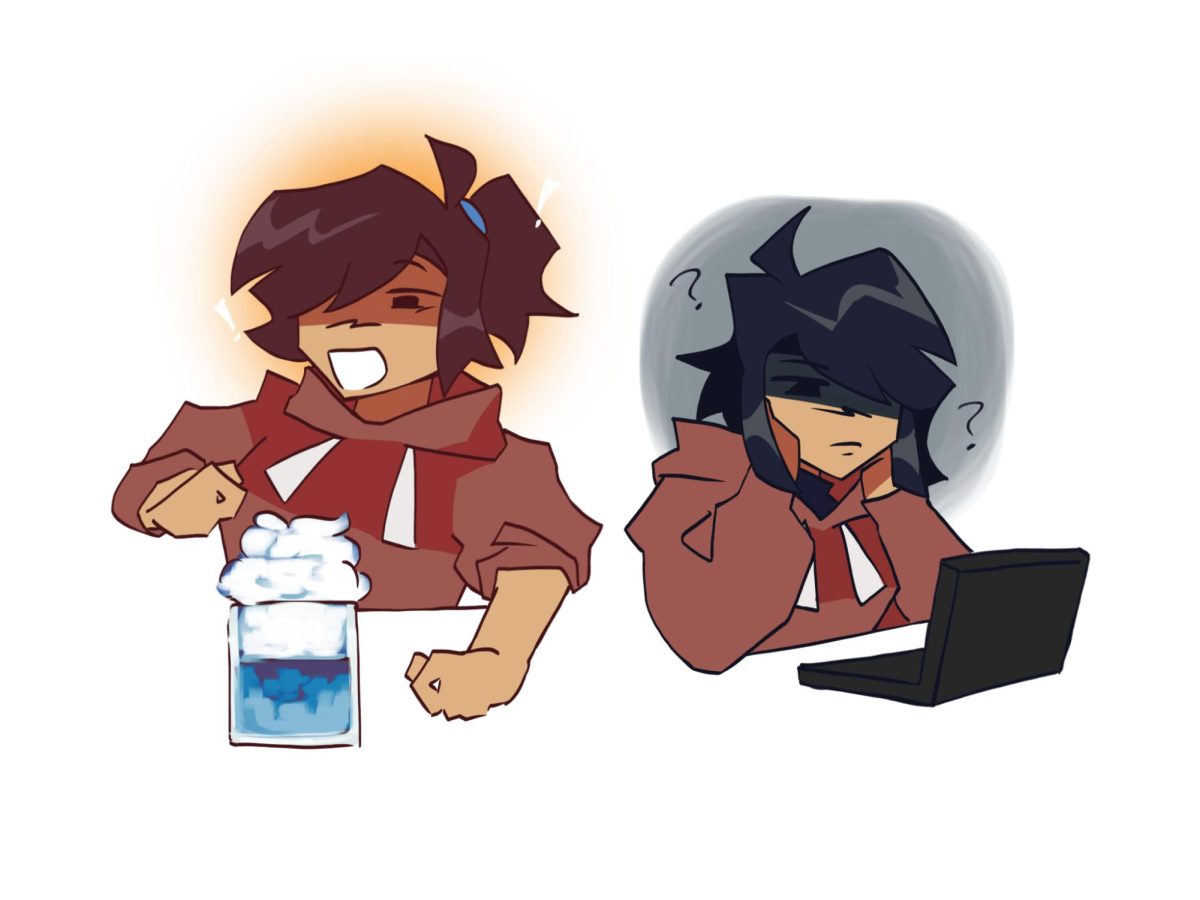I remember an APUSH class when we were told to make a list of impactful historical events and, without using textbooks or notes, connect how each event set up the next.
Despite the somewhat difficult challenge, it made me ponder if this question was asked in a different class, would I be able to create an answer? For the classes I rely on my computer for, would I be able to do the same? I found that AP US History, a course known for its rigorous, detail-oriented sessions, and Economics known for its hands-on approach, are far more effective for learning and comprehension than many of the relaxed, student-driven methods used in other courses. Based on my experience in APUSH and Econ, I recommend more teachers use a better balance of hands-on, teacher-led instruction with restricted use of digital tools.
AP US History is a no-device class and emphasizes traditional learning methods like handwriting notes. Students are expected to take Cornell notes, for example, meticulously documenting key historical events and analyses.
Not only that, a significant aspect of learning in the class involves studying the American Pageant and American Spirit textbooks outside of class, requiring students to dedicate more time to the course and boost their understanding of complex events in American history. This method of self-studying before and after lectures helps students learn the content, greatly incentivized by teacher Jack Bungarden’s morning quizzes.
APUSH’s critical thinking tools and full class lectures prepare students extremely well for the AP tests too. In fact, I found the APUSH exam around the same difficulty as regular unit tests or even easier.
Another teaching method that appears to work is a hands-on, interactive style. In Grant Blackburn’s Economics class, instead of using textbooks to learn concepts, these concepts are often experienced through hands-on activities like the Monopoly parody, PaloaltoOpoly, which showcases the exaggerated effects of inflation.
By applying what I learned through hands-on, teacher-led activities, I enjoyed the class more and found the material easier to understand. Compared to scrolling through articles or taking online Schoology quizzes in other classes, this style of teaching is far more useful.
Unfortunately in some classes, after finishing a unit test, we have a week to learn new course material on our own, putting a high emphasis on self-directed study.
Ideally, self-studying encourages students to be more independent and more responsible, an undeniably valuable skill. However, in practice, these sessions are not always used wisely, and a less urgent motivation to study and being constantly tugged by digital distractions often leads students to do work for other classes or engage in non-academic activities.
These tendencies to stray from coursework and go online, especially during class, can slow the learning processes, limit meaningful attention to course content and potentially make students more irresponsible.
The use of digital tools in education is not evil, though. Digital resources provide access to a wealth of information that can further supplement or reteach what is learned in class.
Technology can also speed up understanding and help those with different learning styles. During the COVID-19 Zoom years, many students, including me, struggled to understand class material and often relied on other sources such as Khan Academy to connect the dots.
But it’s because learning through the internet is so easy that it can be harmful. The reliance on technology can sometimes overshadow the long-shaped aspects that traditional teaching methods uphold.
Overreliance on technology can block critical thinking opportunities and cause students to lose deep comprehension.
Also, in classes where teachers limit access to devices, direct engagement with the material is easier when compared to classes where students can use things like school Chromebooks to take online tests.
While there are ways to prevent cheating when using a Chromebook for a test, there is no way to stop distractions if someone has their Chromebook open during lectures.
Taking notes and restricting technologies aren’t the only ways to develop an understanding of concepts either. Blending the autonomous work of self-studying with real-life applications such as labs where students have to figure out concepts can also create a comprehensive educational experience. This form of blending two learning methods not only shapes students to be independent but it expands critical thinking through experimentation.
While there are benefits to digital tools and student autonomy in the classroom, teachers need to blend a greater mix of hands-on, teacher-led methodologies to patch the flaws of the more modern techniques often used in classrooms. Adjusting the blend of both traditional and modern educational practices is the right step to better prepare students for a technologically advancing world where critical thinking skills are more important every day.


